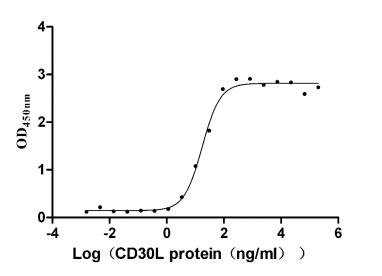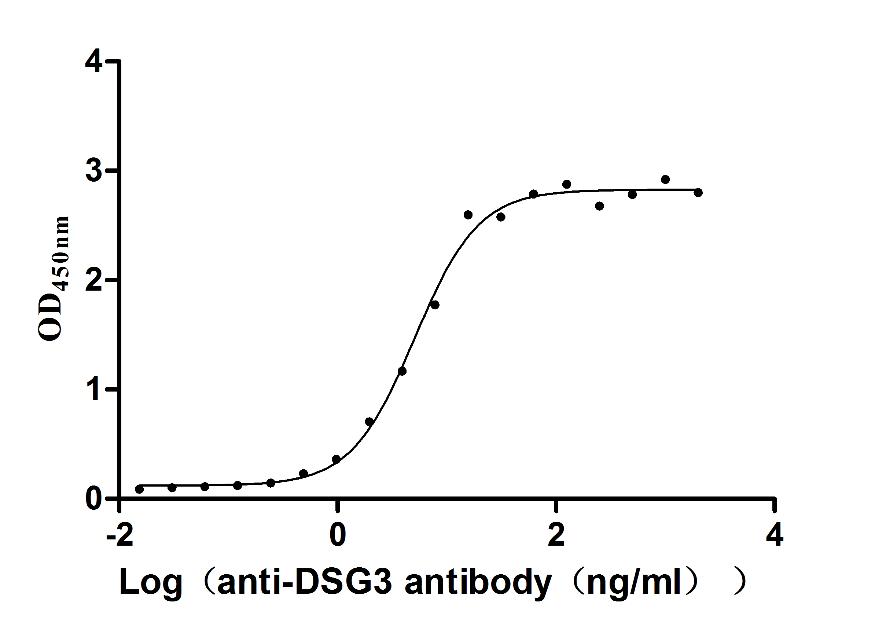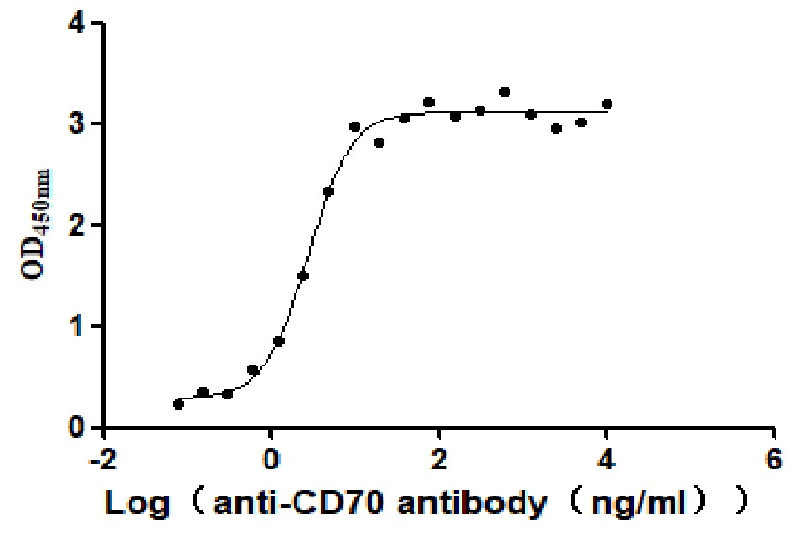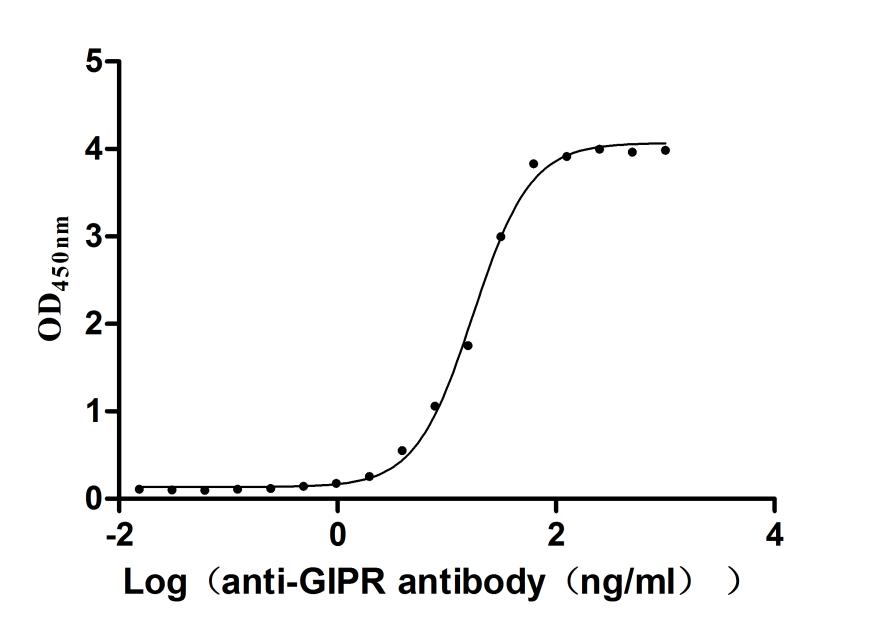Recombinant Rat Potassium channel subfamily K member 3 (Kcnk3)
-
中文名稱:大鼠Kcnk3重組蛋白
-
貨號:CSB-CF012071RA
-
規(guī)格:
-
來源:in vitro E.coli expression system
-
其他:
產(chǎn)品詳情
-
基因名:Kcnk3
-
Uniprot No.:
-
別名:Kcnk3; Task; Task1; Potassium channel subfamily K member 3; Acid-sensitive potassium channel protein TASK-1; TWIK-related acid-sensitive K(+ channel 1; Two pore potassium channel KT3.1; Two pore K(+ channel KT3.1
-
種屬:Rattus norvegicus (Rat)
-
蛋白長度:Full length protein
-
表達區(qū)域:1-411
-
氨基酸序列MKRQNVRTLALIVCTFTYLLVGAAVFDALESEPEMIERQRLELRQLELRARYNLSEGGYE ELERVVLRLKPHKAGVQWRFAGSFYFAITVITTIGYGHAAPSTDGGKVFCMFYALLGIPL TLVMFQSLGERINTFVRYLLHRAKRGLGMRHAEVSMANMVLIGFVSCISTLCIGAAAFSY YERWTFFQAYYYCFITLTTIGFGDYVALQKDQALQTQPQYVAFSFVYILTGLTVIGAFLN LVVLRFMTMNAEDEKRDAEHRALLTHNGQAGGLGGLSCLSGSLGDGVRPRDPVTCAAAAG GMGVGVGVGGSGFRNVYAEMLHFQSMCSCLWYKSREKLQYSIPMIIPRDLSTSDTCVEHS HSSPGGGGRYSDTPSHPCLCSGTQRSAISSVSTGLHSLATFRGLMKRRSSV
Note: The complete sequence may include tag sequence, target protein sequence, linker sequence and extra sequence that is translated with the protein sequence for the purpose(s) of secretion, stability, solubility, etc.
If the exact amino acid sequence of this recombinant protein is critical to your application, please explicitly request the full and complete sequence of this protein before ordering. -
蛋白標(biāo)簽:N-terminal 10xHis-tagged
-
產(chǎn)品提供形式:Liquid or Lyophilized powder
Note: We will preferentially ship the format that we have in stock, however, if you have any special requirement for the format, please remark your requirement when placing the order, we will prepare according to your demand. -
緩沖液:Lyophilized from Tris/PBS-based buffer, 6% Trehalose, pH 8.0
-
儲存條件:Store at -20°C/-80°C upon receipt, aliquoting is necessary for mutiple use. Avoid repeated freeze-thaw cycles.
-
保質(zhì)期:The shelf life is related to many factors, storage state, buffer ingredients, storage temperature and the stability of the protein itself.
Generally, the shelf life of liquid form is 6 months at -20°C/-80°C. The shelf life of lyophilized form is 12 months at -20°C/-80°C. -
貨期:Basically, we can dispatch the products out in 1-3 working days after receiving your orders. Delivery time may differ from different purchasing way or location, please kindly consult your local distributors for specific delivery time.Note: All of our proteins are default shipped with normal blue ice packs, if you request to ship with dry ice, please communicate with us in advance and extra fees will be charged.
-
注意事項:Repeated freezing and thawing is not recommended. Store working aliquots at 4°C for up to one week.
-
Datasheet & COA:Please contact us to get it.
相關(guān)產(chǎn)品
靶點詳情
-
功能:pH-dependent, voltage-insensitive, background potassium channel protein. Rectification direction results from potassium ion concentration on either side of the membrane. Acts as an outward rectifier when external potassium concentration is low. When external potassium concentration is high, current is inward.
-
基因功能參考文獻:
- Mechanical ventilation (MV) downregulated the TASK-1 channel level in the rat brainstem, and the effect seemed to correlate positively with the tidal volume level, indicating that MV has an effect on the respiratory centre, possibly causing damage to it by increasing neuronal excitability. PMID: 29093631
- KCNK3 expression and function were reduced in pulmonary artery smooth muscle cells and endothelial cells in monocrotaline-induced pulmonary hypertension. Long-term KCNK3 inhibition induced distal neomuscularization and early hemodynamic signs of PH. PMID: 26912814
- In the dorsal horn of the developing rat, TWIK-related acid-sensitive K(+) channels TASK-1 (KCNK3) and TASK-3 (KCNK9) were down-regulated during postnatal development PMID: 23219908
- TASK-1 in rat cardiomyocytes is controlled by endothelin-1 and suggest that the inhibition of TASK-1 via endothelin receptors is mediated by the activation of phospholipase C. PMID: 22977011
- PKC-mediated KCNK3 internalization required the presence of both 14-3-3beta and a novel potassium channel endocytic motif PMID: 22846993
- H(2)S excites type 1 cells through the inhibition of background (TASK) potassium channels. PMID: 22419174
- Results suggest that expression of TASK-2/TASK-3 (but not TASK-1) undergoes age-related changes in dorsal root ganglion (DRG) neurons; TASK-2/TASK-3 (but not TASK-1) likely contribute to resting membrane potential in DRG neurons in neonates/adults. PMID: 22017174
- In the rat hippocampus, TASK-1 immunoreactivity was observed in astrocytes within normal and epileptic hippocampus. PMID: 21710317
- Findings are likely to be relevant to recently reported roles of TASK-1 in cerebral ischemia, stroke and inflammatory brain disorders. PMID: 20835844
- mRNA expression of TASK1 was significantly higher in SHR than in WKY carotid bodies before hypertension developed. PMID: 20019330
- Characterization in cerebellar granule neurons PMID: 12122143
- role in potassium-dependent cerebellar granule neuron apoptosis PMID: 12783883
- TASK-1 does not contribute to O2 sensing in immortalized adrenomedullary chromaffin (MAH) cells; data reiterate indirect O2 sensitivity of TASK-1, which appears to require the presence of an intracellular mediator PMID: 14576090
- data demonstrate that GABA(B) receptors mediate autoreceptor feedback in the adrenal medulla presumably via TASK-1 protein, demonstrating a common autoregulatory feedback pathway in neurosecretory, chemosensitive cells. PMID: 14637154
- native 38 pS K+ channels of the TASK family in cultured cerebellar granule neurones consist of both homomeric TASK-3 and heteromeric TASK-1/TASK-3 PMID: 14678492
- In the juvenile, extensive TASK-1 was seen in glial cells in white matter. TASK-1 occured in cerebellar and brain stem neurons in the adult. PMID: 15167558
- Distributions of acid-sensitive two-pore-domain K+ channels TASK-1, TASK-2 and TASK-3 were investigated in the rat and human cerebellum. Rat astrocytes were positive for TASK-2 channels. Granule cells and astrocytes were moderately positive for TASK-3. PMID: 15197476
- TASK-1 and TASK-3 subunits coassociate in functional channels, and heteromeric TASK channels provide a substantial component of background K(+) current in motoneurons with distinct modulatory properties. PMID: 15282272
- binding of p11 to TASK-1 retards the surface expression of the channel, most likely by virtue of a di-lysine retention signal at the C-terminus of p11 PMID: 16420525
- Using the differential sensitivity of TASK-1 and TASK-3 to divalent cations and spermine we found that about 20% of the standing outward current in thalamocortical relay neurons flows through TASK-3 channels. PMID: 16513667
- Isoprenaline-mediated relaxation seems to arise from several processes, including the cAMP-cascade and, a hyperpolarisation that is not due to activation of ATP-sensitive K channels but possibly of two-pore domain K channels of the TASK family PMID: 16736155
- TASK-1 channels may function as central chemoreceptors that play a role in spontaneous sleep apneas in rats. PMID: 18272437
- K(2)P channels as novel potassium conductance on T lymphocytes critically influencing T cell effector function and identify a possible molecular target for immunomodulation in T cell-mediated autoimmune disorders PMID: 18375952
- Activation of muscarinic receptors in adrenal medullary cells, induces secretion through the inhibition of TASK1-like channels. PMID: 18554317
- Data suggest that, after status epilepticus, TASK-1 immunoreactivity is differentially altered in astrocytes located in different regions of the hippocampal complex, and these changes are caused by astroglial degeneration/regeneration. PMID: 18671295
- K(2P)3.1 (TASK 1) immunoreactivity was detected in supporting cells and transitional cells of the crista ampullaris, in vestibular dark cells and in neuron cytoplasm within Scarpa's ganglia. PMID: 18838117
- Although K(2P) channels are highly expressed, K(2P) currents are not activated via the NO/cGMP pathway in rat middle cerebral artery smooth muscle, despite the presence of numerous putative PKG phosphorylation sites PMID: 19363137
顯示更多
收起更多
-
亞細胞定位:Cell membrane; Multi-pass membrane protein.
-
蛋白家族:Two pore domain potassium channel (TC 1.A.1.8) family
-
組織特異性:Strongest expression in heart. Moderate expression in lung and brain. Low levels in liver, kidney and skeletal muscle.
-
數(shù)據(jù)庫鏈接:
Most popular with customers
-
Recombinant Human Tumor necrosis factor receptor superfamily member 8 (TNFRSF8), partial (Active)
Express system: Mammalian cell
Species: Homo sapiens (Human)
-
Recombinant Human Desmoglein-3 (DSG3), partial (Active)
Express system: Baculovirus
Species: Homo sapiens (Human)
-
Recombinant Human CD70 antigen (CD70), partial (Active)
Express system: Mammalian cell
Species: Homo sapiens (Human)
-
Recombinant Human Gastric inhibitory polypeptide receptor(GIPR),partial (Active)
Express system: Mammalian cell
Species: Homo sapiens (Human)















